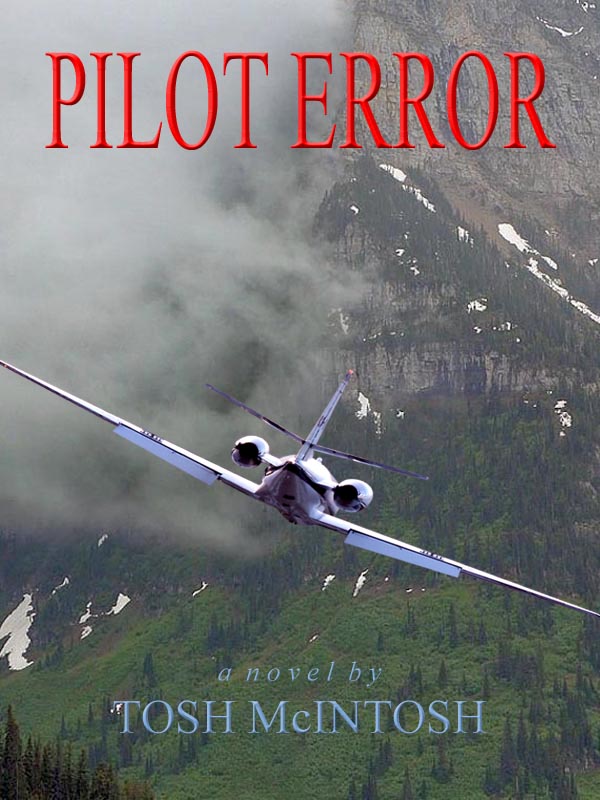In the three-dimensional world of flight, the word “normal” (conforming to a standard; usual, typical, or expected) is defined in relation to both procedures (a series of actions conducted in a certain order or manner) and maneuvers (a movement or series of moves requiring skill and care).
Procedures other than normal are either abnormal (deviating from what is normal or usual, typically in a way that is undesirable or worrying), or emergency (a serious, unexpected, and often dangerous situation requiring immediate action).
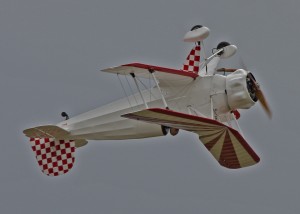 For civilian pilots and aircraft, the Federal Aviation Administration (FAA) labels flight maneuvers other than normal as “aerobatic,” and defines them as intentional maneuvers involving abrupt change in attitude, an abnormal attitude, or acceleration not necessary for normal flight.
For civilian pilots and aircraft, the Federal Aviation Administration (FAA) labels flight maneuvers other than normal as “aerobatic,” and defines them as intentional maneuvers involving abrupt change in attitude, an abnormal attitude, or acceleration not necessary for normal flight.
This definition doesn’t tell us much, however, unless we first define what constitutes normal flight. The FAA doesn’t do that specifically, except to say that unless each occupant of the aircraft is wearing a parachute (if that were normal. far fewer people would fly in airplanes!), the pilot may not execute any intentional maneuver that exceeds a bank angle of 60 degrees or a nose-up or nose-down attitude of 30 degrees. Other than specific training in spin prevention and recovery, which is required to obtain a private pilot’s license, I’d had no training in maneuvers that exceeded the FAA’s normal flight parameters prior to entering USAF Undergraduate Pilot Training,
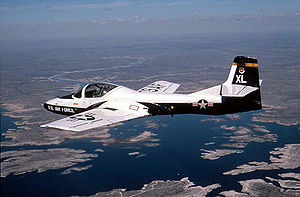 That quickly changed as I worked my way through the “Contact” Phase of the UPT T-37 syllabus. Although many of the learning objectives from civilian training were repeated, including steep turns, slow flight, no-flap landings, stalls (straight ahead and turning), and spins, they frequently involved more extreme flight attitudes, higher G forces, and more aggressive flight control and throttle movements. I’ll use stall training as an example.
That quickly changed as I worked my way through the “Contact” Phase of the UPT T-37 syllabus. Although many of the learning objectives from civilian training were repeated, including steep turns, slow flight, no-flap landings, stalls (straight ahead and turning), and spins, they frequently involved more extreme flight attitudes, higher G forces, and more aggressive flight control and throttle movements. I’ll use stall training as an example.
An airplane stalls for only one reason: the wings exceed critical “angle of attack,” which is the angle between the “mean chord line” (a line drawn from the leading edge of the wing to the trailing edge) and the “relative wind.”
For the non-flyer, think of this as riding in a car with your arm extended out the window, hand level so the air flows smoothly over it. If you begin rotating your hand so the air begins hitting your palm, the buffeting you feel is analogous to the turbulence on the wings of an aircraft when the airflow strikes the underside of the wings rather than flowing smoothly over the top and bottom. The effects of this disturbed, “separated” airflow can be felt throughout the airplane, along with a “sloppy” feel to the flight controls and lateral instability (difficulty in controlling bank).
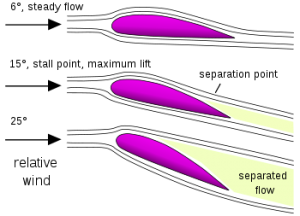 The primary objective of stall training is prevention, and all pilots are taught to recognize the symptoms of an approaching stall so they can take timely corrective action to avoid it. If the approach is performed at 1 G, these symptoms gradually occur and intensify, and a pilot has to be asleep at the controls to stall an airplane, and brain dead to let the stall progress into a spin.
The primary objective of stall training is prevention, and all pilots are taught to recognize the symptoms of an approaching stall so they can take timely corrective action to avoid it. If the approach is performed at 1 G, these symptoms gradually occur and intensify, and a pilot has to be asleep at the controls to stall an airplane, and brain dead to let the stall progress into a spin.
In civilian training, the approach to stall is relatively mild (to aviators, at least). But for the military pilot, whose mission often requires much faster application of control pressures than would ever be appropriate for normal civilian flying, the “accelerated” approach to stall is a different beast altogether. G-loading radically alters the dynamics of the maneuver.
 Think of it as the difference between slow motion and fast forward. All the warning symptoms are still there, but they happen so fast that you can’t recognize each one separately. To understand and appreciate the difference requires experiencing it. Intentionally. And as with the 1-G approach to stall, the objective of training is to avoid an inadvertent encounter with the devil waiting to ruin your day.
Think of it as the difference between slow motion and fast forward. All the warning symptoms are still there, but they happen so fast that you can’t recognize each one separately. To understand and appreciate the difference requires experiencing it. Intentionally. And as with the 1-G approach to stall, the objective of training is to avoid an inadvertent encounter with the devil waiting to ruin your day.
My logbook indicates that on January 5th, 1965, I practiced “power-on” stalls for the first time in the T-37. In all previous stall training, both civilian and military, the maneuver had begun with retarding the throttle(s) to idle. As the airplane slowed, I gradually increased back pressure on the controls to maintain altitude and experienced the warning signs in predictable order until the airplane figuratively said, “Okay, I quit.” The nose would drop with a shudder, maybe slice to the left or right, and the airplane would roll into a steep bank. To recover from the stall and minimize altitude loss, I’d simultaneously relax the back pressure to reduce the angle of attack, roll wings level, add power and re-apply back pressure without causing a “secondary” stall.
But 1-G stall training is misleading, because depending on gross weight, an airplane will predictably and repeatedly stall at the same airspeed. This can lead the pilot to conclude that to avoid a stall requires nothing more than maintaining an adequate margin above that speed. And as my instructor pilot (IP) described the accelerated stall maneuver during the flight briefing, I remember thinking, He wants me to do WHAT?
At an airspeed well above stall, with the throttles in the mid range, I’m going to roll into a bank of about 70 degrees and haul back on the stick. Aggressively. Exactly what I’d been taught not to do in civilian training. And all those warning signs are going to blend together in one spectacular event.
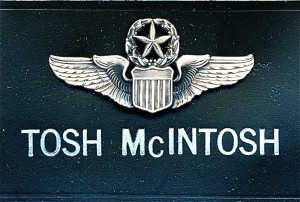 My IP was right, and he taught me two unforgettable lessons that I had good reason to remember throughout my military career as a fighter pilot: I can stall an airplane at any speed (although later I learned of an exception — supersonic flight), and the extra airspeed above stall translates directly into the speed and violence of the event.
My IP was right, and he taught me two unforgettable lessons that I had good reason to remember throughout my military career as a fighter pilot: I can stall an airplane at any speed (although later I learned of an exception — supersonic flight), and the extra airspeed above stall translates directly into the speed and violence of the event.
There’s a pilot saying that applies here, usually spoken with a slight nod: “I learned about flying from that.”


